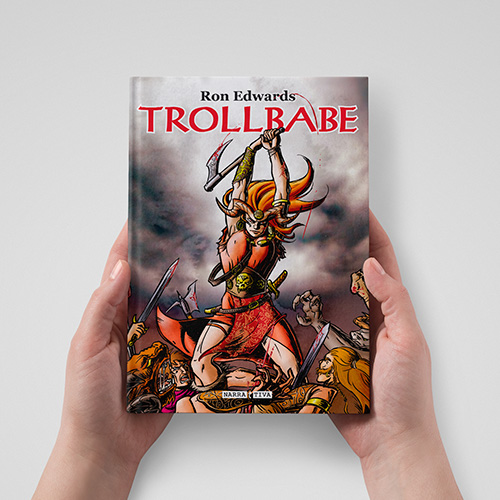After setting up my little consulting table at the Palace Hotel during Lucca, I found myself tired of discourse and yearning for play. When a friend I hadn’t seen for a while passed by, with a copy of Trollbabe (in Italian, published by Narrattiva) in hand, that seemed like the perfect plan.
There’s a little social trip-up on display, in that I thought Mauro was walking with a friend, and invited them to play, and both of them sat down. Thinking as well that I might know the guy if he was a friend of Mauro’s, I figured I’d either remember his name or he’d remind me at some point, or I could always ask Mauro later. But only much later, via email, did I learn that Mauro had no idea who he was either! I’d innocently roped a complete stranger into sitting down for a substantial play session on no basis whatsoever.
If anyone knows the guy, speak up. He was a great player and Raskah kicked serious ass.
This video required no, zero, zip edits once we began play, which is frankly freakish, in comparison to the dozens of sessions I’ve prepared for posting in the past year. We simply did not cease playing at any point … maybe for about ten seconds when Mauro offered the chocolate balls, but that’s it. I’ve observed ever since the earliest playtests that Trollbabe delivers the most powerful buy-in starting moments of play of any role-playing game I’m familiar with, and I think this detail confirms it once again.
This presentation is a wee experiment as well, as my first attempt at a YouTube playlist. So the displayed video here is Part 1 of three, and you have to tell me if it goes into the sequence the way it’s supposed to. [editing months later! I did it! I did it! It does now]

